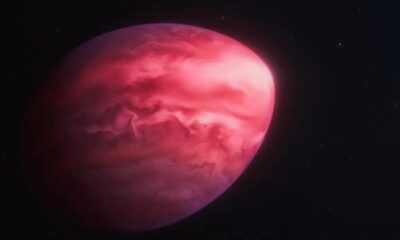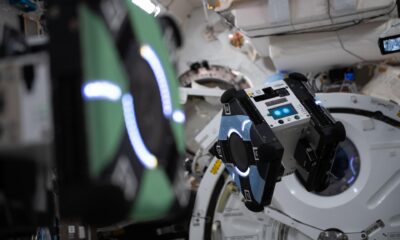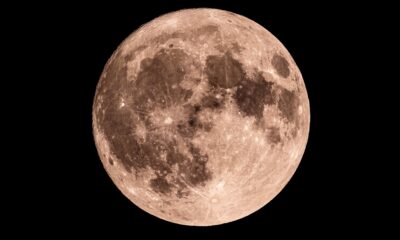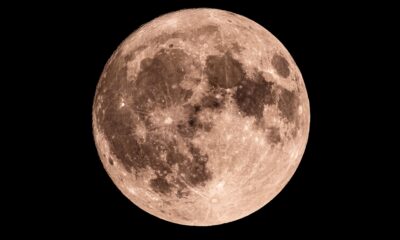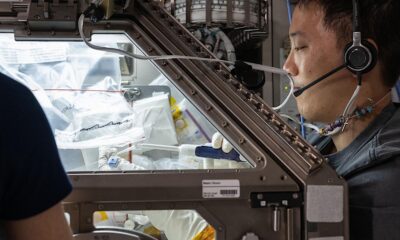Science
NASA’s JWST Discovers Hidden Black Holes Devouring Stars
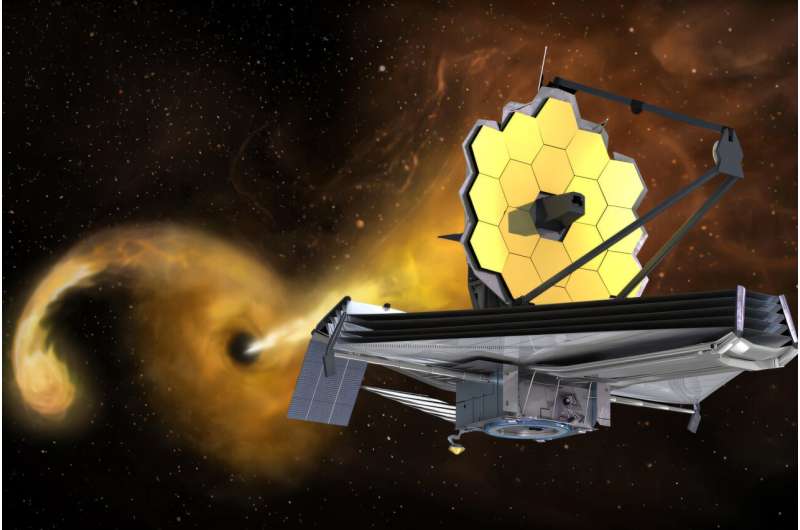
A team of astronomers from the Massachusetts Institute of Technology (MIT), Columbia University, and other institutions has utilized NASA’s James Webb Space Telescope (JWST) to uncover previously hidden black holes consuming stars in dusty galaxies. Their findings, published on July 24, 2025, in the Astrophysical Journal Letters, showcase the telescope’s ability to identify tidal disruption events (TDEs)—spectacular occurrences when a black hole tears apart a nearby star.
Revealing the Invisible
Prior to this study, astronomers had observed around 100 TDEs since the 1990s, primarily detected through X-ray or optical light in galaxies with minimal dust. The MIT researchers highlighted that many potential TDEs remain obscured in dust-rich environments, limiting visibility to traditional observational methods. Their research indicates that the intense energy released during a TDE can heat surrounding dust, generating infrared signals detectable by JWST.
The team targeted four dusty galaxies suspected of hosting TDEs. JWST’s advanced infrared capabilities allowed the researchers to identify clear signs of black hole accretion, a process in which material from a star is drawn into a black hole. The data revealed patterns distinct from those surrounding active black holes, suggesting that the black holes in these galaxies had been dormant until recently.
“These are the first JWST observations of tidal disruption events, and they look nothing like what we’ve ever seen before,” stated lead author Megan Masterson, a graduate student at MIT’s Kavli Institute for Astrophysics and Space Research. “We’ve learned these are indeed powered by black hole accretion, and they don’t look like environments around normal active black holes.”
New Insights into Black Hole Activity
The study expands on previous efforts using NASA’s Near-Earth Object Wide-field Infrared Survey Explorer (NEOWISE). Using a specialized algorithm developed by co-author Kishalay De, the team analyzed a decade’s worth of NEOWISE data, identifying infrared transients that could signify a black hole awakening to consume a passing star. This earlier research uncovered approximately a dozen potential TDE sources.
Through the more sensitive JWST observations, the team sought specific “spectral lines” that indicate conditions associated with a TDE. They focused on a unique peak in infrared light, which can only arise from black hole accretion processes. Notably, this radiation can excite neon atoms, leading to infrared emissions detectable by JWST.
Among the four TDE candidates, the researchers found the closest tidal disruption event yet detected, located approximately 130 million light years from Earth. Other signals included bursts of X-ray light and rapid gas movements around a central black hole. These observations confirmed the presence of black hole accretion in all four galaxies, indicating that these events were triggered by dormant black holes awakening to feast on nearby stars.
Masterson emphasized the significance of these findings, stating, “Together, these observations say the only thing these flares could be are TDEs.” The researchers are committed to identifying more hidden TDEs using JWST, NEOWISE, and other infrared telescopes. With additional detections, they hope to gain insights into black hole properties, such as mass and spin, by examining how much of a star is shredded and the speed at which its debris is consumed.
“The actual process of a black hole gobbling down all that stellar material takes a long time,” Masterson noted. “It’s not an instantaneous process. And hopefully, we can start to probe how long that process takes and what that environment looks like.”
The implications of this research extend beyond understanding black holes. By revealing the environments surrounding both active and dormant black holes, scientists can deepen their comprehension of these enigmatic cosmic phenomena and their larger role in the universe.
For further details, refer to the original study: Megan Masterson et al, “JWST’s First View of Tidal Disruption Events: Compact, Accretion-driven Emission Lines and Strong Silicate Emission in an Infrared-selected Sample,” The Astrophysical Journal Letters, 2025. DOI: 10.3847/2041-8213/ade153.
-

 Technology5 months ago
Technology5 months agoDiscover the Top 10 Calorie Counting Apps of 2025
-

 Technology3 weeks ago
Technology3 weeks agoOpenAI to Implement Age Verification for ChatGPT by December 2025
-

 Health3 months ago
Health3 months agoBella Hadid Shares Health Update After Treatment for Lyme Disease
-

 Health3 months ago
Health3 months agoAnalysts Project Stronger Growth for Apple’s iPhone 17 Lineup
-

 Health4 months ago
Health4 months agoErin Bates Shares Recovery Update Following Sepsis Complications
-

 Technology5 months ago
Technology5 months agoDiscover How to Reverse Image Search Using ChatGPT Effortlessly
-

 Technology3 months ago
Technology3 months agoElectric Moto Influencer Surronster Arrested in Tijuana
-

 Technology5 months ago
Technology5 months agoMeta Initiates $60B AI Data Center Expansion, Starting in Ohio
-
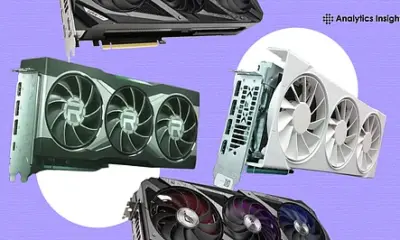
 Technology2 months ago
Technology2 months agoDiscover 2025’s Top GPUs for Exceptional 4K Gaming Performance
-

 Technology5 months ago
Technology5 months agoRecovering a Suspended TikTok Account: A Step-by-Step Guide
-

 Health5 months ago
Health5 months agoTested: Rab Firewall Mountain Jacket Survives Harsh Conditions
-

 Lifestyle5 months ago
Lifestyle5 months agoBelton Family Reunites After Daughter Survives Hill Country Floods



